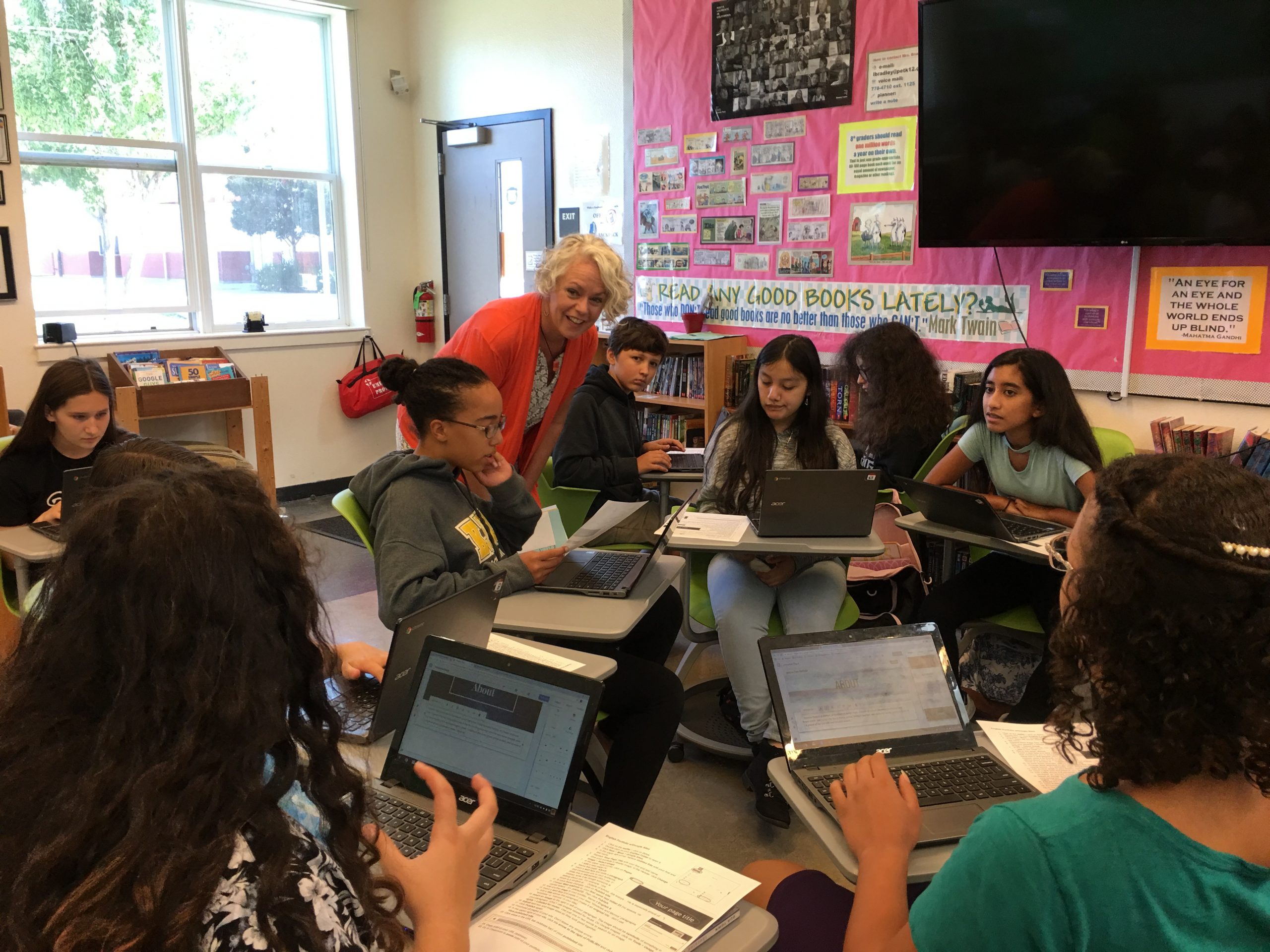My first year of teaching was so traumatic that 30 years later I still shudder at the memories. Not only was I woefully unprepared for the challenges of working with middle school students, but I had no idea how to plan engaging lessons and long-term units. I remember sitting alone at my desk on a staff development day, after our principal told us to work on our year plan. I stared at my blank lesson plan book and thought, “I don’t know what I’m doing next week, let alone next month and the rest of the year!”
Of course I had a teacher’s edition for a textbook, but I couldn’t imagine marching my students through it. I didn’t learn to love reading and writing from a textbook, and I was determined to offer my students more creative ways to develop their skills. But how?
Today I would go online and reach out to the many teachers on Twitter who freely share their work. I might pick up a book written by a teacher (like from the EdTechTeam Press or Dave Burgess Consulting), or I might go back to notes from a conference (like an EdTechTeam Summit or CUE event), or I might turn to trusted education sources like Edutopia, TED-Ed and PBS Learning Media.
But in 1988? It was just me and a textbook (and my typewriter).

I’ve seen a lot of changes in my three decades in the classroom, from standards and assessments to computers in every classroom, backpack and pocket. But one of the most profound changes for me has been the power of pursuing my own professional development: connecting with educators around the world; learning, growing and improving as a teacher on my own terms. Of course this means doing a lot of this work on my own time (and sometimes my own dime), but I can honestly say it has been well worth it for me and my career.
I was talking with a friend recently about some work I’m doing with PBS, and she asked, “Why are you still in the classroom?” Thirty years ago I assumed I would spend my entire career in a classroom; historically teachers saw few other options. But in the last decade or so, educators have found ways to craft their own career path, still centered on education, but not necessarily as a full time classroom teacher.
Teachers are writing books, giving keynotes, leading trainings, starting their own businesses and supporting teachers in district-level positions. A teacher’s traditional career path, usually flat for three decades as we start and end our career in a classroom, isn’t our only option any longer.
Yet for me, the classroom still offers the challenges, creativity and fulfillment that keep me excited to come to work every day. Just when I think I have discovered the latest and greatest ways to engage my students in meaningful work, something new appears on the horizon. From National Board Certification in 2005 to Google Certified Innovator in 2012 to working with PBS this year as a Digital Innovator All-Star, taking charge of my own professional development has kept my classroom an exciting and innovative place for me (and my students).
If I had left the classroom nine years ago, I would have missed out on the powerful changes that new technologies bring to my students’ learning. When a local grant brought laptops to my classroom, my students moved their work from paper to online blogs, and my writing classroom was transformed.
If I had left seven years ago, I would have missed out on the magic of NaNoWriMo, which gives my 8th graders an entire semester to write their own novels (some of whom publish and sell their books on Amazon). I thought that was just about the greatest thing I would ever see in an English classroom. But then just two years ago, my students honed their narrative skills by designing and coding computer games based on the novels they had written. Coding computer games in an English class?! Who would ever expect that?
What if I had left six years ago? I would have missed the opportunity to design and teach a digital design elective class. How exciting it is to see students use digital programs to learn 3D modeling, architectural drawing, animating, sculpting and coding.
Even leaving four years ago would have meant missing out on the incredible challenge of partnering with colleague Isaac Raya to build a broadcast media program where our 12 and 13-year-old students produce a daily news broadcast all by themselves.
Just last month, as I was planning my back-to-school lessons, I came across this brilliant idea from David Theriault, a teacher I haven’t met but whose work on Twitter inspires thousands. And so here I am, 30 years since my first first-day-of-school, and it looks nothing like it did last year or the year before.
Why am I still in the classroom? How can I possibly leave when the next great thing is right around the corner?
Whether you are looking for ways to grow as a classroom teacher, or you are ready to forge your own education career path, taking charge of your own PD allows you to deepen your knowledge and strengthen your practice in ways that work best for you and keep you and your students inspired.
